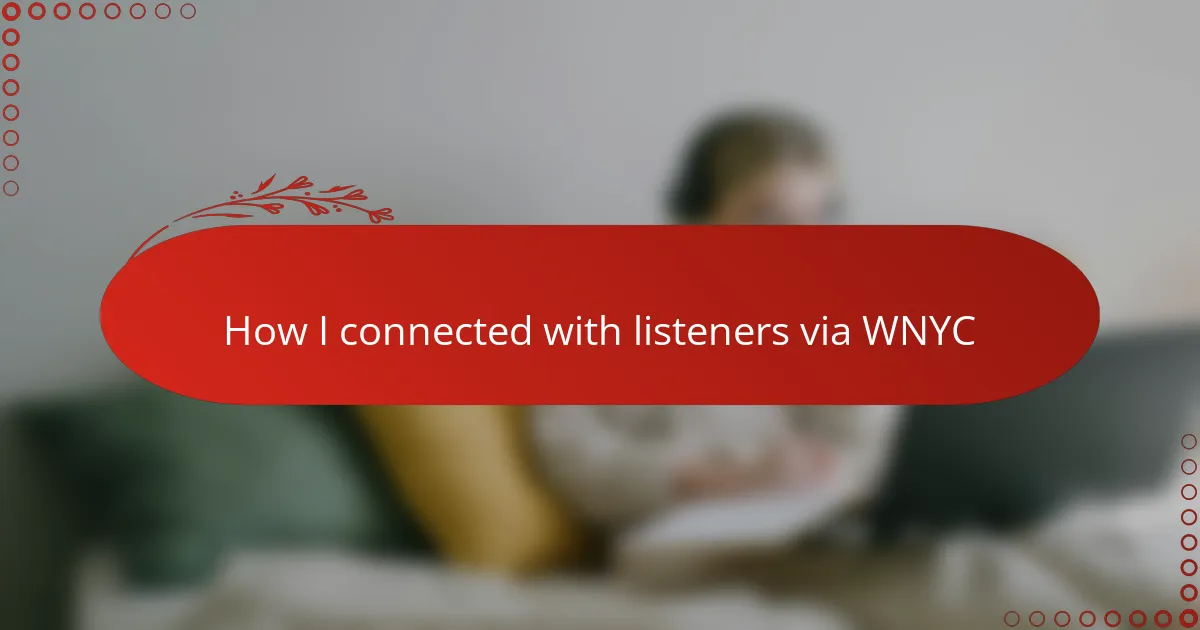Key takeaways
- Radio broadcasting creates intimate connections through storytelling, emotion, and authenticity, fostering a sense of community among listeners.
- Engaging with the audience requires active listening and genuine interaction, transforming broadcasts into meaningful conversations.
- Trust is built through vulnerability and sharing personal experiences, making listeners feel valued and connected.
- Collaboration and authenticity from both radio hosts and producers enhance the quality of broadcasts and deepen community engagement.
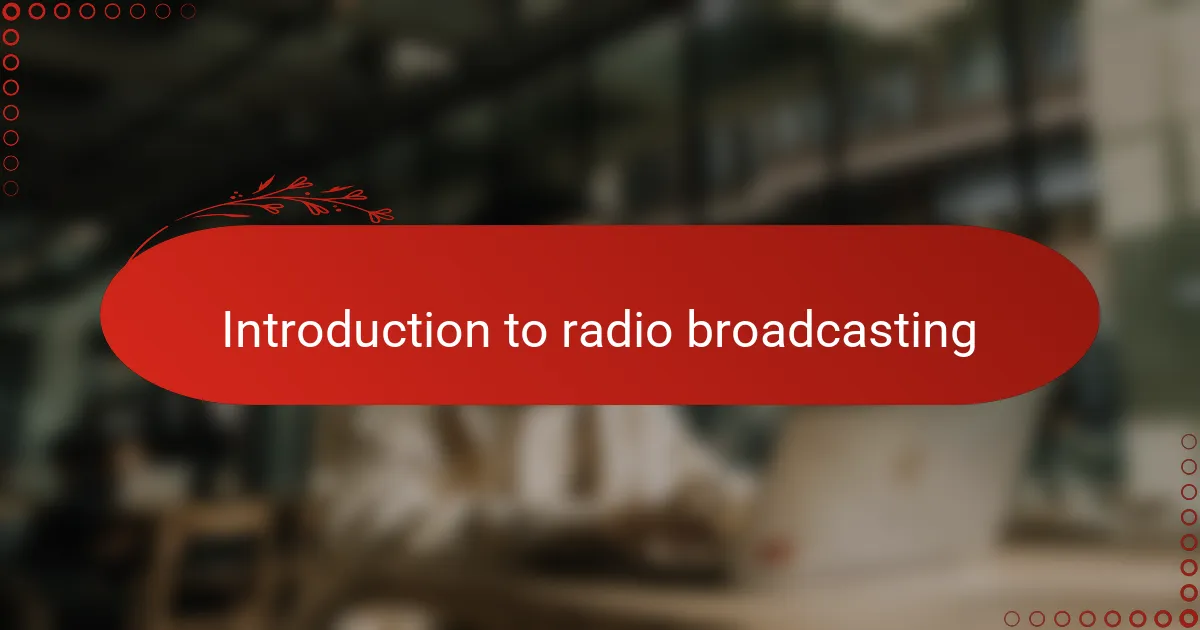
Introduction to Radio Broadcasting
Radio broadcasting has always fascinated me because of its unique ability to create intimate connections. Think about it: without visuals, how does a voice alone capture your attention and spark your imagination? This mystery, to me, is the heart of radio’s magic.
When I first tuned in to a local station, I never realized how much a simple broadcast could evoke emotions and build a sense of community. Radio is not just about sharing information; it’s about sharing moments, stories, and sometimes even feelings we can’t always express face-to-face.
Have you ever wondered why radio still thrives despite all our flashy screens and apps? I believe it’s because a well-crafted broadcast invites you in, makes you feel heard, and connects you to the world in a way that feels deeply personal and real.
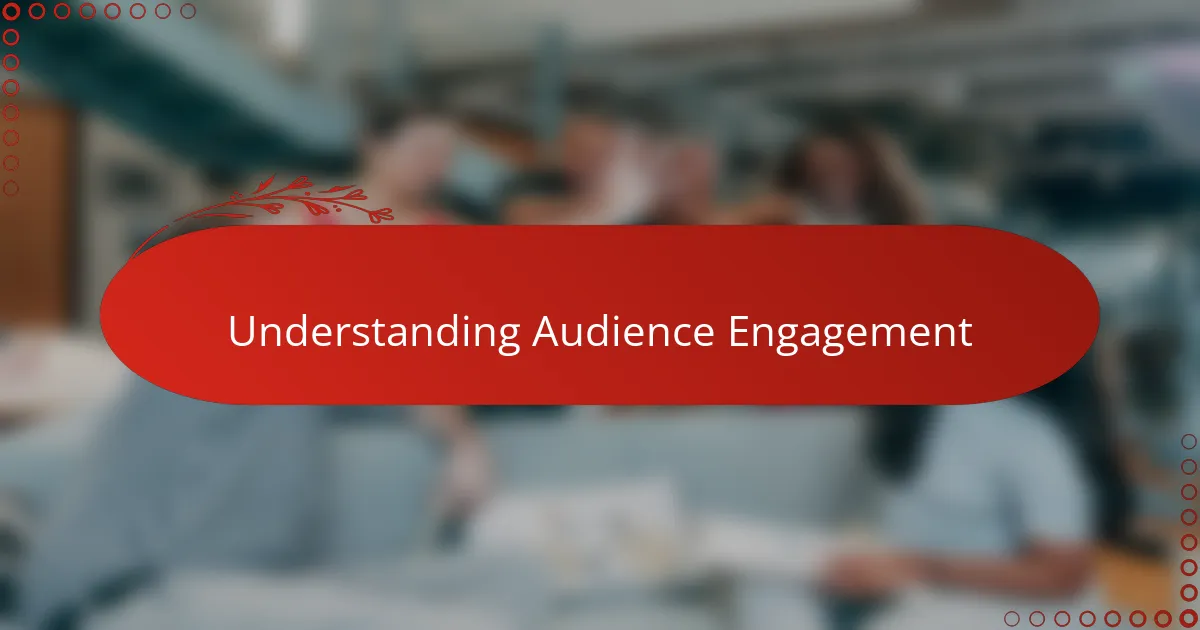
Understanding Audience Engagement
Engaging an audience means more than just speaking into a microphone; it requires truly listening and responding to what they care about. I’ve found that when I tap into shared experiences or emotions, listeners don’t just hear my words—they feel them. Have you noticed how a voice that understands can transform a casual listen into something memorable?
I remember a moment when a caller shared a story that perfectly mirrored what I had just mentioned on air. That connection wasn’t planned, but it deepened my belief that audience engagement thrives on authenticity. It’s this back-and-forth, this sense of mutual presence, that turns listeners into companions rather than passive recipients.
What does it take to keep listeners coming back? From my experience, it’s about creating an ongoing conversation where people feel seen and valued. When you treat your audience as individuals with unique perspectives, you’re not just broadcasting—you’re building a community that listens, responds, and grows together.
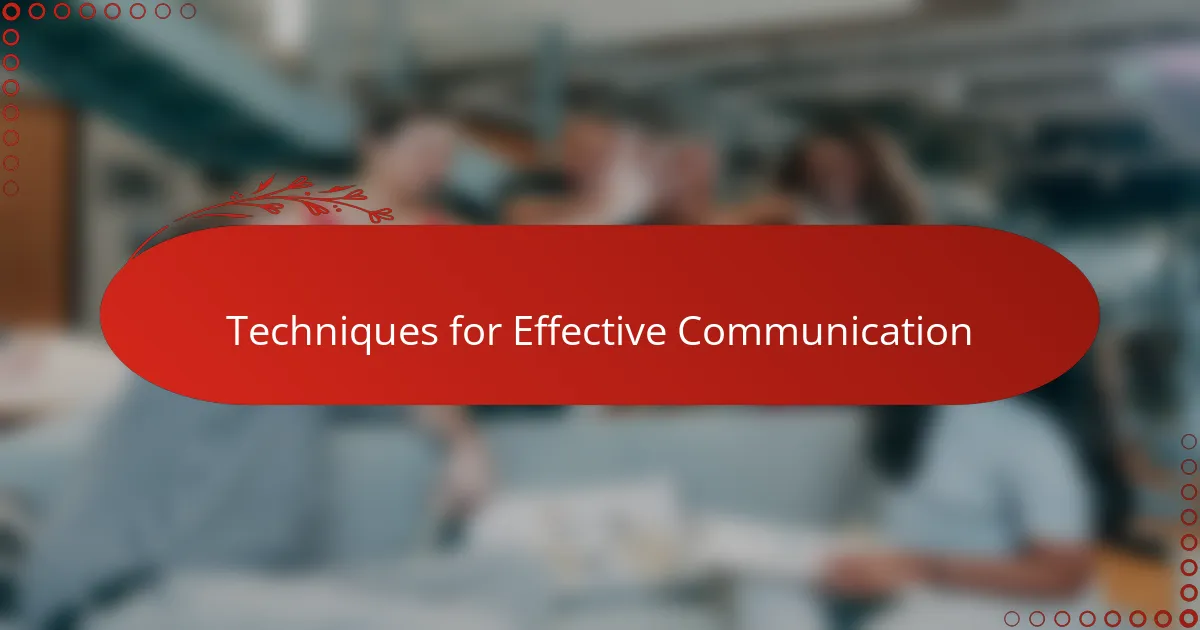
Techniques for Effective Communication
One technique I’ve embraced is speaking with clarity and warmth, as if I’m having a conversation with a close friend. Have you ever noticed how tone can make or break a message? When I slow down and choose my words carefully, listeners seem to lean in, turning a simple segment into something meaningful.
Another approach I’ve found effective is using vivid storytelling to paint pictures with sound. Instead of just delivering facts, I try to evoke senses and emotions by describing scenes or sharing personal moments. People remember stories because they feel real—and that’s where real connection happens.
Finally, I always ask myself: Am I inviting the listener into this space, or keeping them outside? Pausing to let silence breathe, asking open-ended questions, or even inviting feedback creates a dialogue rather than a monologue. From my broadcasts at WNYC, these small but intentional choices have made listeners feel included and valued.
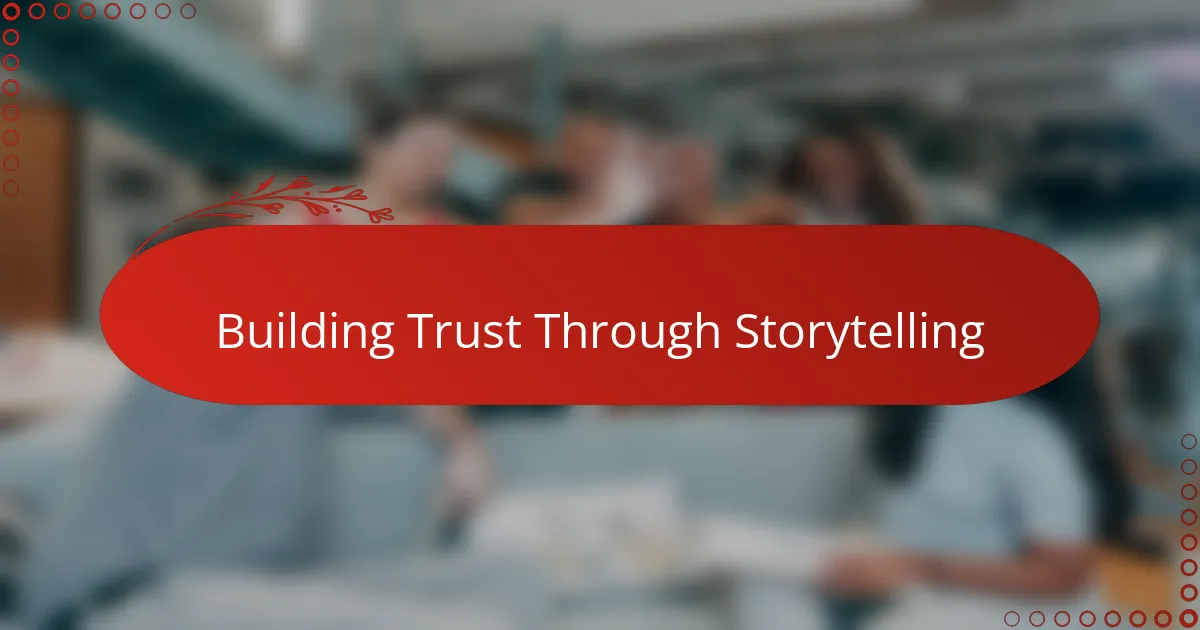
Building Trust Through Storytelling
Trust is the foundation of any meaningful connection, especially on radio where listeners can’t see you. I learned early on at WNYC that stories shared with honesty and vulnerability invite people to trust you—not just as a broadcaster but as a fellow human being revealing their truth. Have you ever felt that moment when a story resonates so deeply you almost forget there’s a microphone between you?
I remember sharing a personal experience about loss during a live segment, unsure how it would be received. The flood of listener responses afterward showed me that vulnerability breeds trust; in opening up, I had created a safe space where others felt comfortable sharing their own stories. That moving exchange taught me that storytelling isn’t just about entertainment—it’s about building a bridge of empathy between me and my audience.
What makes storytelling such a powerful trust-builder? To me, it’s the sense that you’re not just hearing facts but witnessing real lives unfolding. When a story is told with genuine emotion and detail, listeners lean in because they sense authenticity. That authenticity sparks trust, transforming casual listeners into loyal companions on the airwaves.
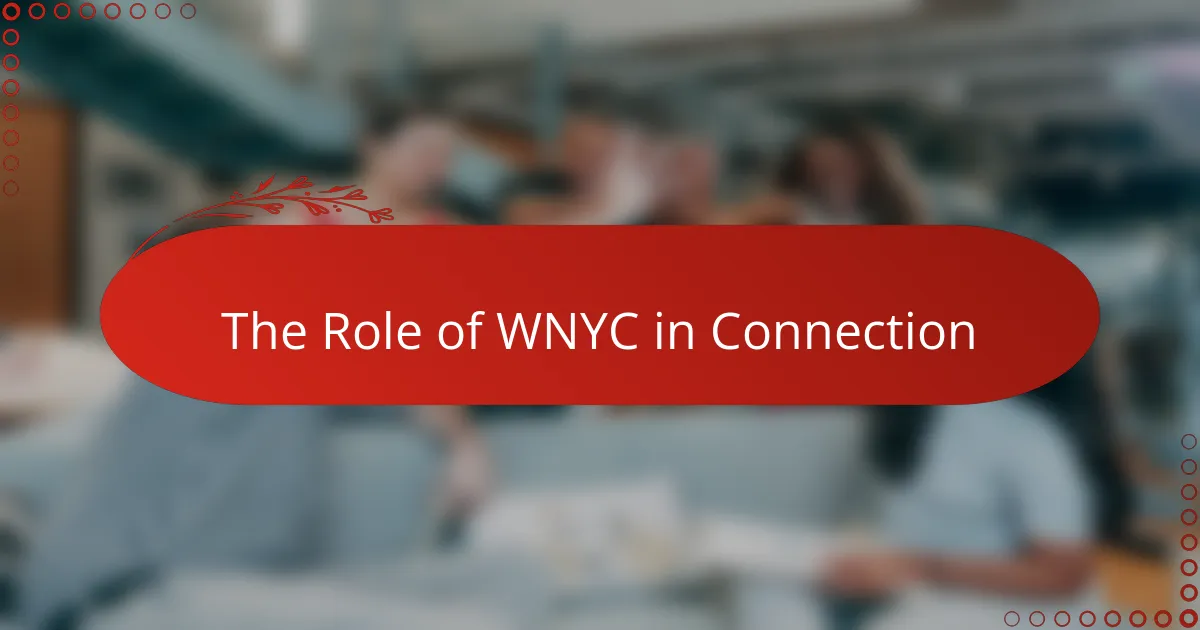
The Role of WNYC in Connection
WNYC has been more than just a platform for me—it’s a trusted companion that amplifies my voice to a community eager to listen. The station’s commitment to thoughtful, diverse programming invites listeners into a shared space where curiosity and connection thrive. Have you ever noticed how WNYC’s blend of storytelling and journalism creates moments that feel both intimate and expansive?
Through my time with WNYC, I experienced firsthand how the station’s culture encourages authenticity. When I opened up about personal experiences on air, I sensed a genuine warmth from listeners that only a station like WNYC could foster. It made me realize that WNYC doesn’t just share stories; it nurtures relationships built on trust and mutual respect.
I’ve seen how WNYC’s skilled producers and hosts create an environment where conversations flow naturally, and listeners feel invited rather than spoken to. Their dedication to quality content and community engagement shapes every broadcast into a meaningful exchange, transforming fleeting moments on air into lasting connections. Isn’t that what we all hope for in the world of radio?
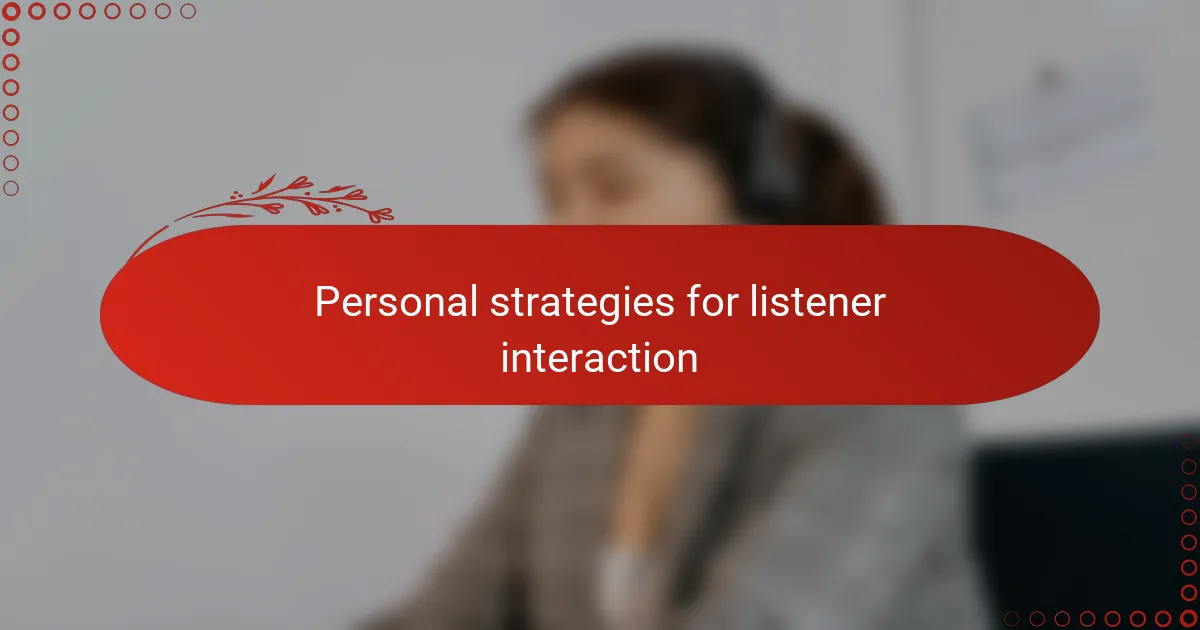
Personal Strategies for Listener Interaction
When it comes to connecting with listeners, I’ve learned that genuine curiosity goes a long way. Asking thoughtful questions and then truly listening to the responses—whether on air or off—helps me understand what resonates. Have you ever noticed how a simple “What do you think?” can turn a one-way broadcast into a lively conversation?
I also make it a point to personalize interactions by remembering details from previous listener messages or calls. It might seem small, but acknowledging someone’s unique perspective — their hometown, their passion, or even a shared challenge — makes them feel seen and valued. In my experience, that kind of recognition transforms casual listeners into regular companions.
Another strategy I’ve found invaluable is inviting feedback openly and often. I don’t just read comments; I respond, adapt, and incorporate what I hear. That responsiveness shows listeners they’re part of the story, not just an audience. Would you tune in if you felt your voice truly mattered? I believe most people would—and that belief shapes how I engage every time I’m on air.
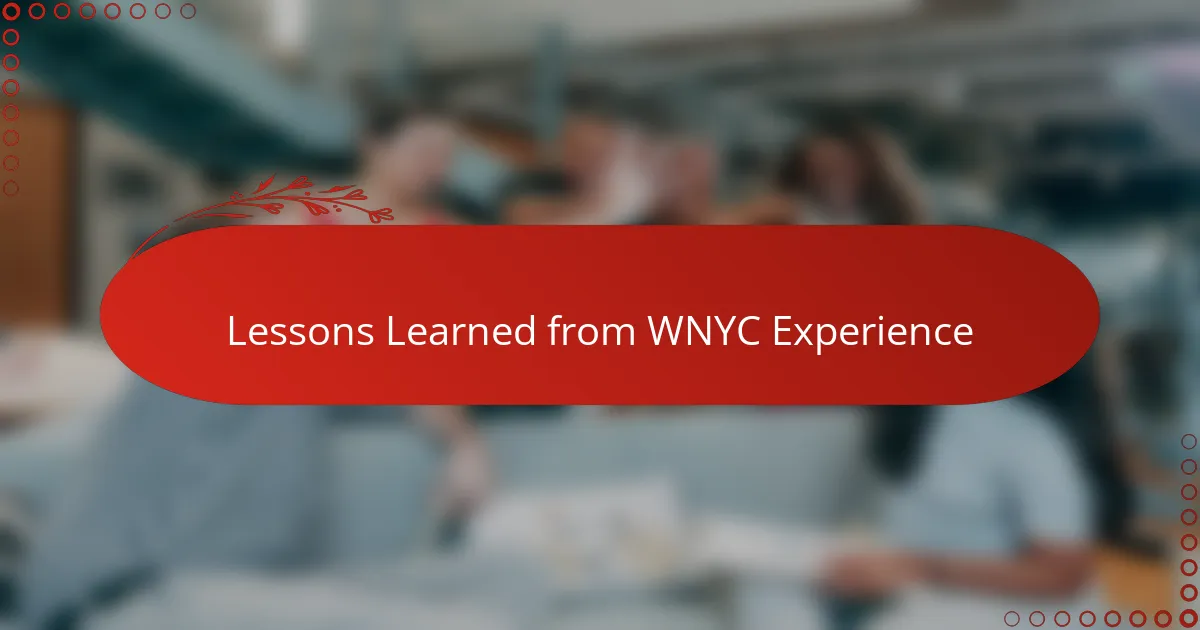
Lessons Learned from WNYC Experience
Reflecting on my time with WNYC, I realized that patience is a vital lesson in forging real connections. Sometimes, the strongest bonds don’t happen instantly but develop gradually as trust builds over multiple broadcasts. Have you ever experienced a moment on air when the silence felt heavy, yet you knew that space was important? Those pauses, I learned, give listeners room to engage emotionally rather than just absorb information.
Another insight from WNYC is the power of authenticity. Early in my journey, I was tempted to stick with polished scripts, but I found that sharing imperfect, candid moments made listeners feel closer. One day, I stumbled over my words during a live segment, and instead of losing listeners, that vulnerability sparked a wave of empathy. It taught me that connection thrives not on perfection, but on being genuinely human.
Lastly, WNYC showed me how collaboration behind the scenes enriches what reaches the airwaves. Working with producers and fellow hosts who cared deeply about the audience created a shared mission that elevated every broadcast. I began to see that connection isn’t just between broadcaster and listener — it’s a community effort, woven together with care and intentionality. Have you ever been part of a team that made something bigger than any one person? That’s the magic WNYC embodies.
